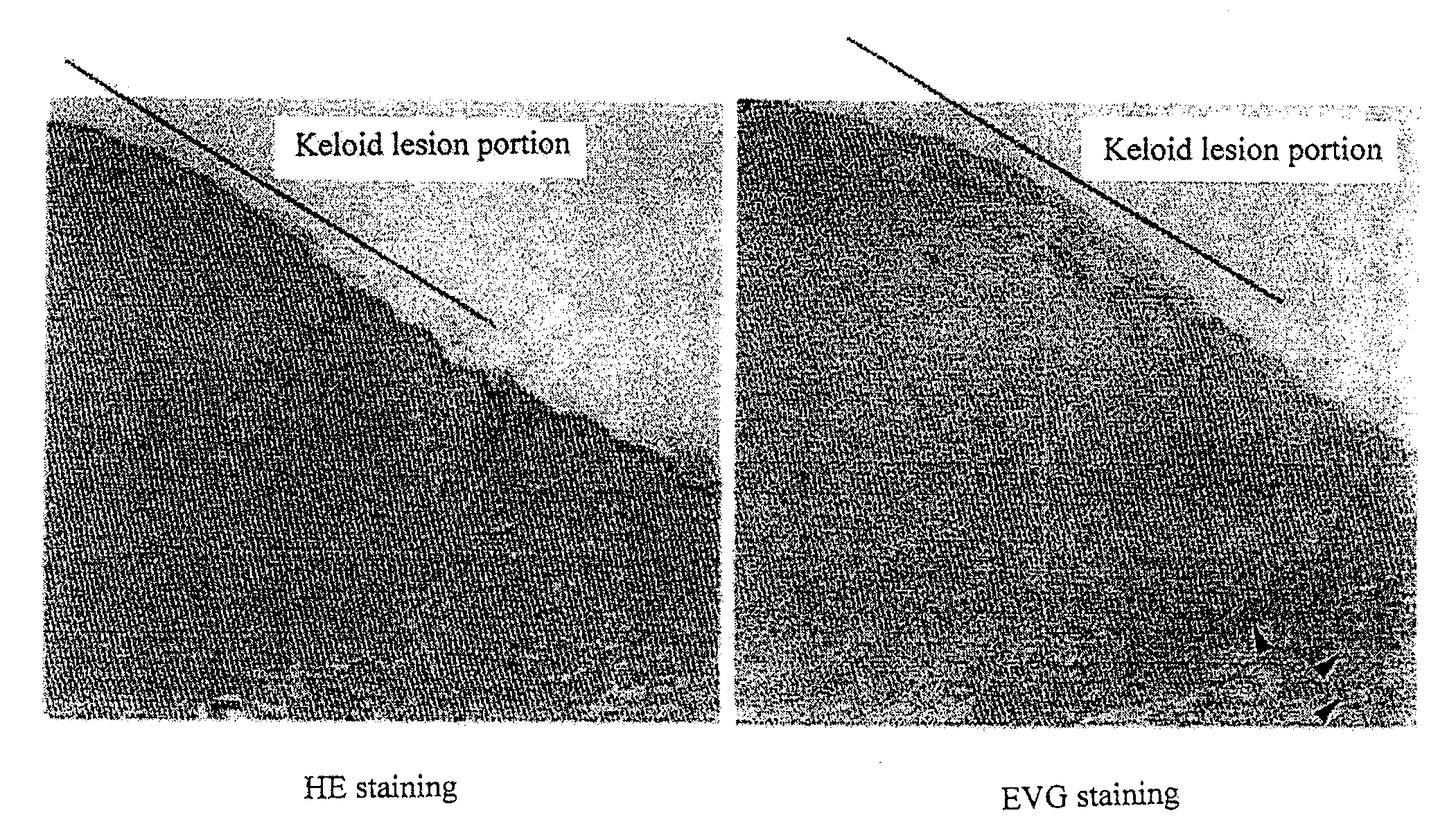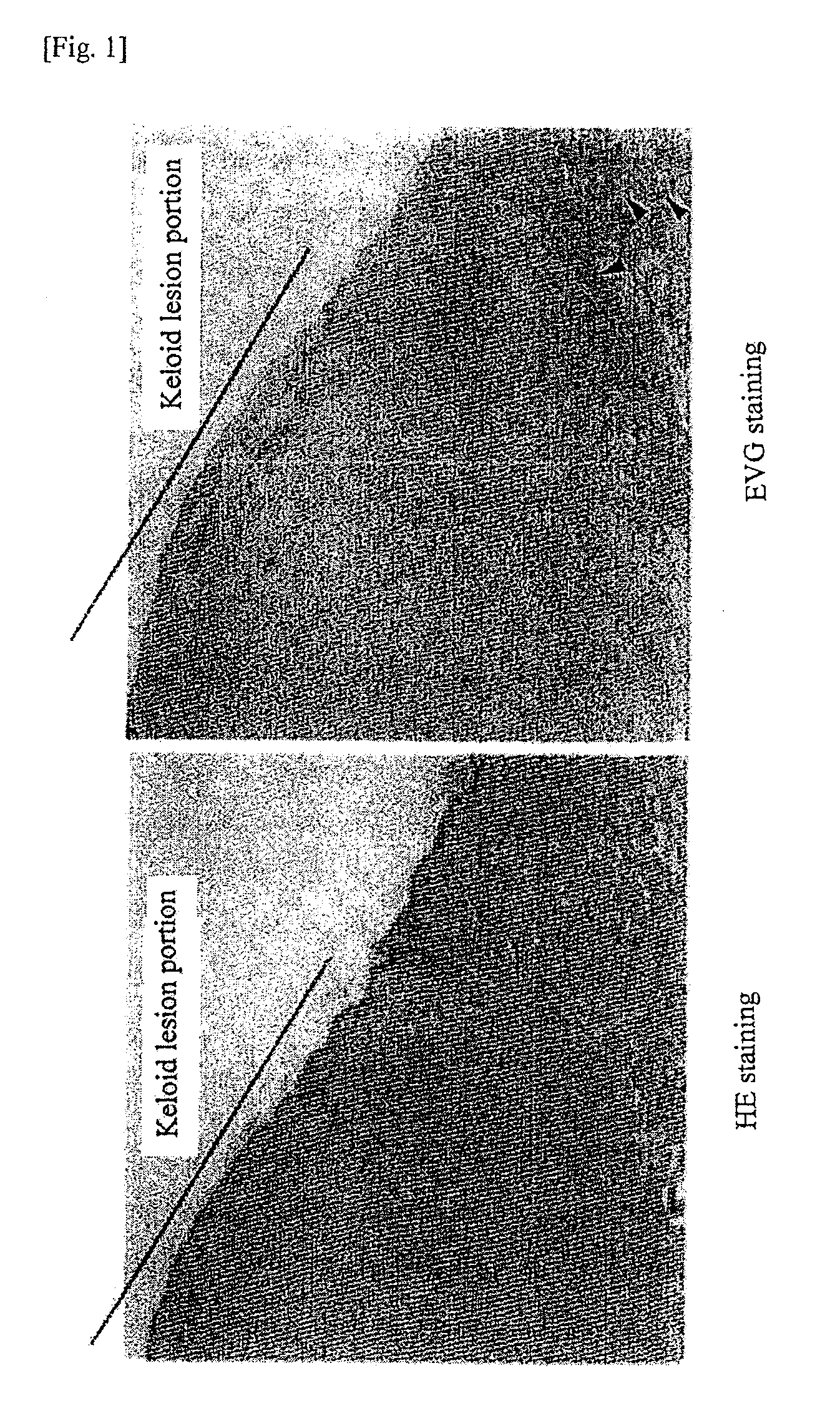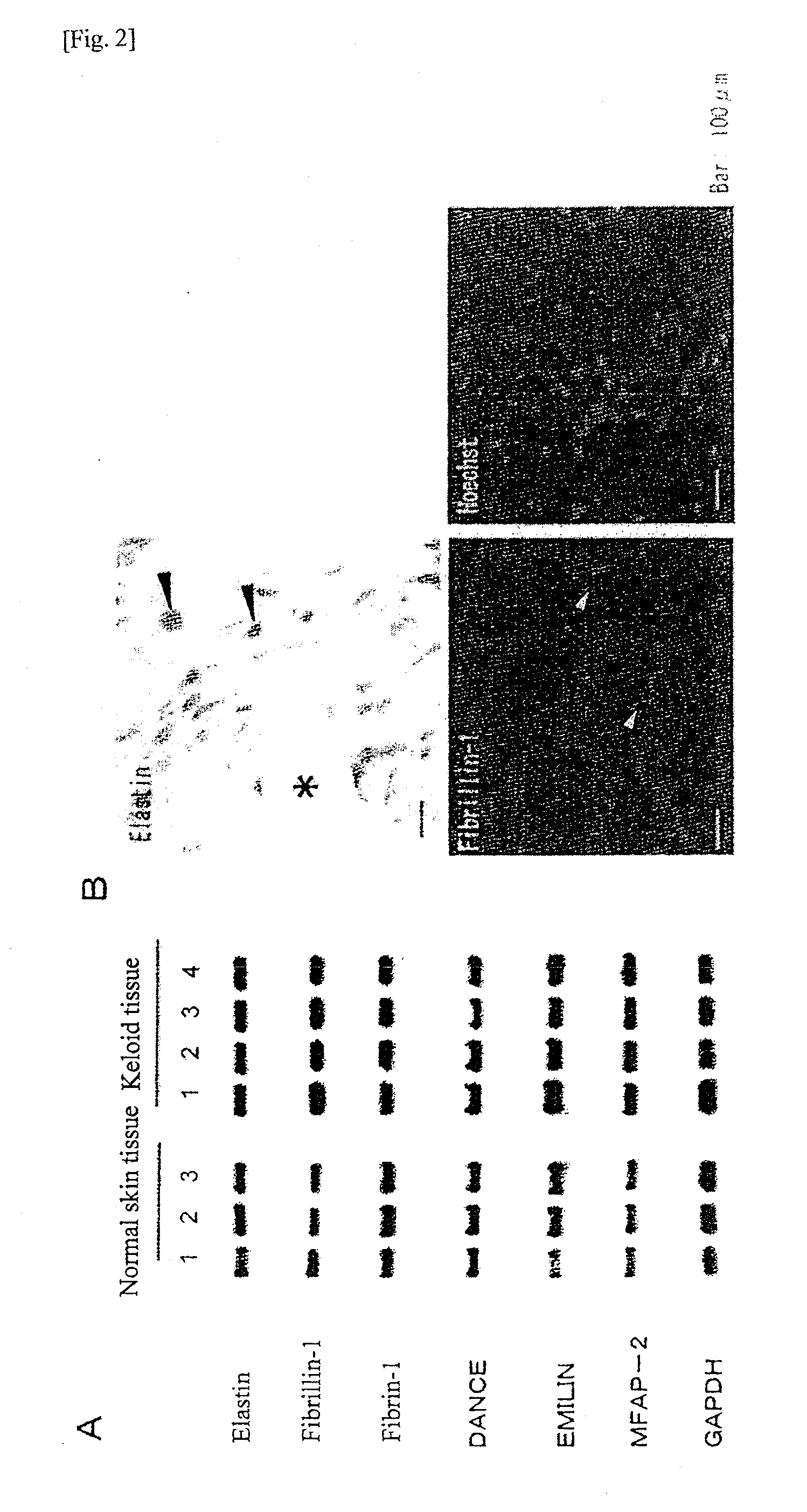Radical therapeutic agent for keloid and hypertrophic scar
a keloid scar and radical technology, applied in the direction of lyase, peptide/protein ingredient, drug composition, etc., can solve the problems of restricting the elasticity of the skin, excessive accumulation of extracellular matrix and cell proliferation, and functional impediments, and achieve the strongest inhibitory effect and more inhibitory
- Summary
- Abstract
- Description
- Claims
- Application Information
AI Technical Summary
Benefits of technology
Problems solved by technology
Method used
Image
Examples
reference example 1
Observation of Keloid Lesion Portion and Normal Skin Part
[0092]As a tissue material, a human tissue sample containing a keloid lesion and normal skin part was extirpated from a keloid patient. The sample was fixed in 4% paraformaldehyde at 4° C. for 24 hours and subsequently embedded in paraffin to prepare a paraffin block from which a 3-μm paraffin section was prepared. After deparaffinization, hematoxylin and eosin (HE) staining and Elastica-van Gieson (EVG) staining were performed on the thus obtained paraffin section to prepare a specimen. The keloid tissue and normal skin tissue were observed under a microscope.
[0093]The results were shown in FIG. 1. The part which was indicated with a line is the keloid lesion portion and the adjacent part is the normal skin part. By EVG staining, the elastic fiber formation (indicated by arrows), which are stained in black, can be confirmed in the normal skin part other than keloid lesion portion. In contrast, hyalinization is observed in the...
reference example 2
mRNA Expression of the Elastic Fiber Constituents in the Lesion Tissue of Keloid and Normal Skin Tissue
[0094]As tissue materials, human samples were extirpated from the keloid lesion tissues (4 individuals) and normal skin tissues (3 individuals). From these keloid tissues and normal skin tissues, total RNAs were extracted using RNeasy Plus kit (manufactured by QIAGEN). From 1 μg of the thus obtained total RNAs, cDNAs were synthesized using Advantage RT for PCR kit (manufactured by Becton, Dickinson and Company of Japan). For seven types of proteins that are the constituents of elastic fibers, the mRNA expressions thereof were examined by RT-PCR. The primers used in this PCR are shown in Table 1.
[0095]The specific sequences were amplified by performing PCR reactions using Blend Taq-plus (registered trademark) (manufactured by Toyobo Co. Ltd.), and the thus obtained PCR products were verified by electrophoresis. The PCR reactions were performed at the following conditions: denaturati...
reference example 3
Expressions of the Elastin and Fibrillin-1 Proteins in the Keloid Tissues
[0097]Reference Example 2 indicated that mRNAs of elastin and fibrillin-1 were expressed at a normal level in the keloid tissues. Subsequently, the expressions of elastin and fibrillin-1 at the protein level, as well as the localization thereof in the extracellular matrix, were examined by immunohistochemical staining. The procedures thereof were as follows.
[0098]Elastin staining: A human keloid tissue was extirpated and fixed in 4% paraformaldehyde at 4° C. for 24 hours. The thus fixed tissue was then embedded in paraffin and a 6-μm section was prepared therefrom. After deparaffinization, immunohistochemical staining was performed using LSAB / HRP kit (manufactured by Dako Japan, Inc.). As the primary antibody, an anti-elastin antibody (1:100; manufactured by Elastin Products Company, Inc., PR533) was used.
[0099]Fibrillin-1 staining: A human keloid tissue was extirpated, which was then immediately embedded in OC...
PUM
| Property | Measurement | Unit |
|---|---|---|
| size | aaaaa | aaaaa |
| pH | aaaaa | aaaaa |
| pH | aaaaa | aaaaa |
Abstract
Description
Claims
Application Information
 Login to View More
Login to View More - R&D
- Intellectual Property
- Life Sciences
- Materials
- Tech Scout
- Unparalleled Data Quality
- Higher Quality Content
- 60% Fewer Hallucinations
Browse by: Latest US Patents, China's latest patents, Technical Efficacy Thesaurus, Application Domain, Technology Topic, Popular Technical Reports.
© 2025 PatSnap. All rights reserved.Legal|Privacy policy|Modern Slavery Act Transparency Statement|Sitemap|About US| Contact US: help@patsnap.com



